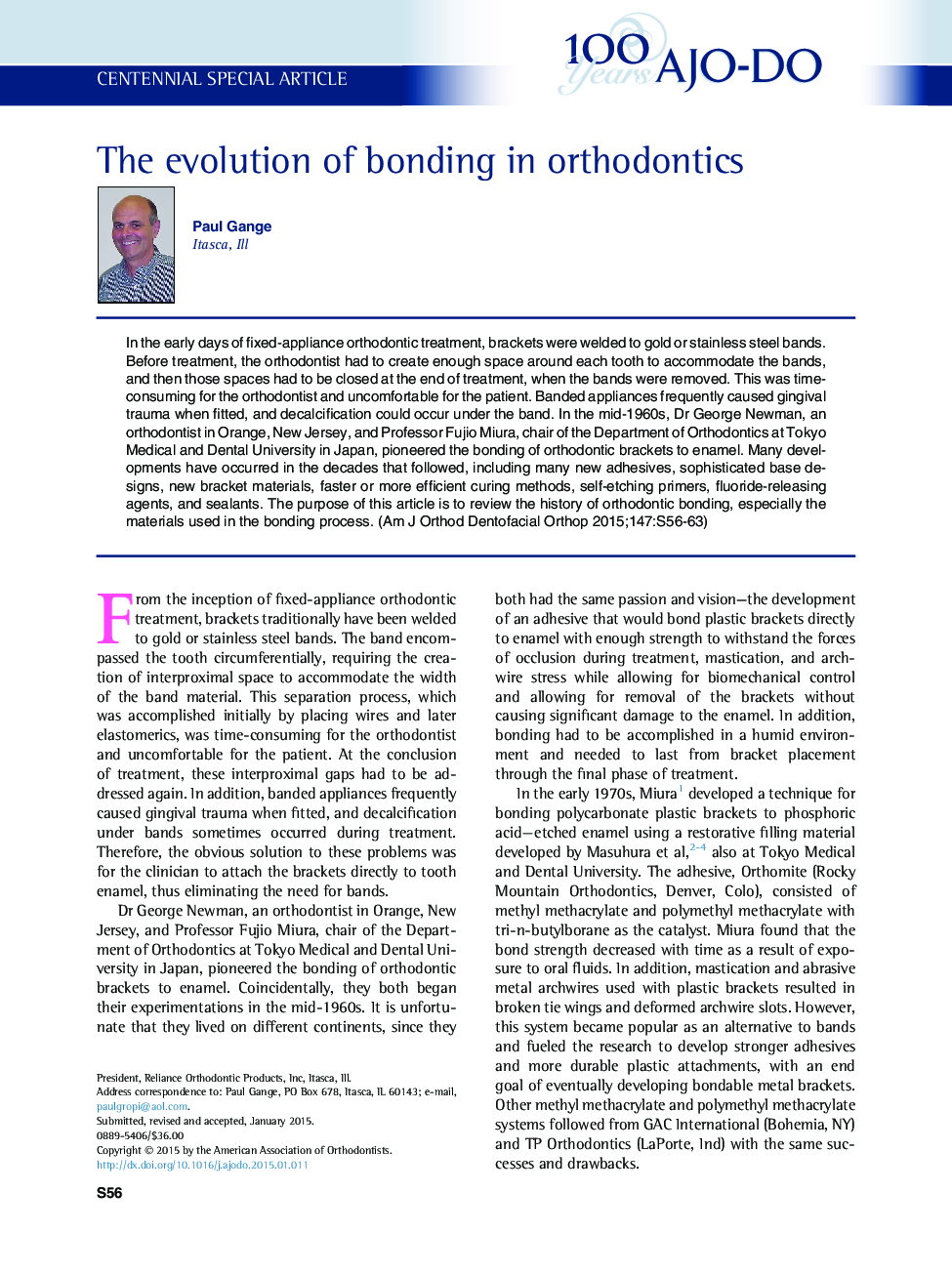| Article ID | Journal | Published Year | Pages | File Type |
|---|---|---|---|---|
| 3115657 | American Journal of Orthodontics and Dentofacial Orthopedics | 2015 | 8 Pages |
In the early days of fixed-appliance orthodontic treatment, brackets were welded to gold or stainless steel bands. Before treatment, the orthodontist had to create enough space around each tooth to accommodate the bands, and then those spaces had to be closed at the end of treatment, when the bands were removed. This was time-consuming for the orthodontist and uncomfortable for the patient. Banded appliances frequently caused gingival trauma when fitted, and decalcification could occur under the band. In the mid-1960s, Dr George Newman, an orthodontist in Orange, New Jersey, and Professor Fujio Miura, chair of the Department of Orthodontics at Tokyo Medical and Dental University in Japan, pioneered the bonding of orthodontic brackets to enamel. Many developments have occurred in the decades that followed, including many new adhesives, sophisticated base designs, new bracket materials, faster or more efficient curing methods, self-etching primers, fluoride-releasing agents, and sealants. The purpose of this article is to review the history of orthodontic bonding, especially the materials used in the bonding process.
